
Origanum “Barbara Tingey”
As in last August’s offering, I’ve decided to highlight a few plants from a single family, well-represented with summer blooming species in the Botanical Garden. Last year, it was the sunflower family, Asteraceae. While I did not nearly cover the breadth and depth of that group (I may fill in those gaps in some future blog/newsletter), our focus this time is on the mints, the family Lamiaceae.
Mints and their relatives are recognized by a few conspicuous characteristics, including leaves arranged in opposite pairs and often, stems that are quadrangular (i.e., square in cross section). Many in the family are aromatic. The flowers are invariably tubular and nectar filled at the base, the tube opening at the throat into two apparent lips. The lower lip is most commonly a platform for pollinators to light upon, while the upper one is a hood to keep the weather off the important bits (pollen-bearing stamens and pollen-receptive stigma). Together with the hard-to-get-at nectary, the flower shape directs or constrains pollinators, such that there is a high probability that pollination can take place. The last feature of importance (and then I promise I’ll stop with the technical stuff) is the arrangement of flowers common to nearly every one of the world’s 7500 species. Much like the leaves, flowers are borne in opposite, paired clusters on upright stems. Mostly, there are several paired clusters up and down this axis; i.e., pagoda like. The paired clusters are known as verticillasters (meaning: “with whorls of flowers”). In some genera, the verticillasters are spread well apart along a lengthy stalk and in others, the levels are telescoped and hardly discernable as separate clusters.
In any case, it doesn’t take a lot of practice to recognize a member of the family. And one does not have to go far to trip over a mint relative. Some of our commonest rough lawn weeds are mints. Ajuga reptans (bugleweed) and Prunella vulgaris (self-heal)—both sometimes grown as ornamentals—produce a few flowers despite close summer mowing. And even some mints can invade and thrive in a wet lawn. But let’s move out of the lawn and into the Garden, where there are more than 150 different species, most of them ornamental, and many in flower in August.
Monarda species and hybrids—the bergamots or bee-balms—are reliable hummingbird and people attractors, and there are several planted in the Garden. The front entrance boasts a good patch of the purplish Monarda didyma ‘Raspberry Wine’, while Monarda ‘Colrain Red’ is a significant feature in the Contemporary Garden. Both will be flowering, winding down, in August. On a slightly smaller scale, the diminutive coyote mints, Monardella species, will be following the same trajectory in the Pacific Slope Garden. The standout here (for me) is Monardella sheltonii, one of three Monardella species in the collection, all from seeds wild-collected in the mountains of southern Oregon and northern California. The Pacific Slope also boasts the weirdly beautiful Trichostema lanatum, which is known by the evocative and appropriate “woolly bluecurls.”
Two shrubby mints, Rostrinucula dependens (weeping butterfly bush) and Elsholtzia stauntonii (mintbush), are found in the Asian section of the Alpine Garden. The Rostrinucula (with large verticillaster-enclosing bracts) sits on the slope above the pond, which is visible from the path above. The Elsholtzia (without bracts) is near the top of the slope, close to the stadium fence. Both are unusual in the family for having little or no fragrance. Whereas most mints are herbaceous perennials or small shrubs, the chaste tree, Vitex agnus castus, can easily grow to tree-like proportions, at least in warm-climate regions. This aromatic species has attractive, palmate foliage and sizeable inflorescences bearing blue flowers. Similar-sized specimens are located in the Physic Garden and at the Front Entrance.
The greatest concentration of mint relatives can be found in the E. H. Lohbrunner Alpine Garden and the Harold & Frances Holt Physic Garden. In the case of the Alpine, the numbers are high because of superior sun exposure and drainage (the family in general appreciates both). In the Physic, European Lamiaceae abound because of similar conditions, and because they represent a significant constituent of the historical European pharmacopeia (i.e., the medicinal reference collection). That, more or less, is the focus for Physic Garden plantings. Mentha spicata (spearmint) is a prime example. Who could think spearmint wasn’t good for something that ails us? Early August is when the pink-flowered Betonica officinalis (wood betony) is at its flowering peak. The number of human ailments that it is reputed to correct makes a staggeringly long list (see Wikipedia). Besides the Physic Garden, there are plantings of wood betony at the Roseline Sturdy Amphitheatre and in the European section of the Alpine Garden.
Blue flowers are also common to the family, and Dracocephalum officinale (hyssop), which is part of the Physic Garden collection on account of its own promised curative properties, excels in the blue-flowered regard. Dracocephalum officinale subsp. aristatus (dwarf hyssop), which has slightly paler blue flowers, is planted at the north edge of the Amphitheatre seating. Satureja montana (winter savoury,) may be an herb familiar to our more culinary-minded visitors. This semi-evergreen species produces a steady stream of surprisingly tiny white flowers through the summer. Winter savoury is mostly overlooked as an ornamental, though it is definitely not overlooked by bees, and thrives here and in the Alpine Garden, but even more so on the slope outside the main entrance to the Amphitheatre.
The European section of the Alpine Garden is home to a wide variety of mint relatives, including the charismatic lavenders—none, in my opinion, more attractive than Lavandula pedunculata (Spanish or butterfly lavender), the verticillasters of which are condensed and essentially hidden. Only the throats of the flowers are visible behind tightly overlapping bracts and below the purple wing-like bracts that top the inflorescence.
Much like the hyssops, Scutellaria baicalensis (Baikal skullcap) stands out with its beautiful, blue-toned flowers. You can find this in the Asian Section of the Alpine Garden. Arguably, however, Origanum ‘Barbara Tingey’—one of the hybrid round-leaf oreganos—also in Asia Minor, is the more impressive ornamental, with its persisting, overlapping rose-pink bracts and peek-a-boo-pink flowers. Although it’s not obvious, there are verticillasters under those enclosing rounded bracts. In the same area, but at the top of the hill, is a patch of the pleasantly-aromatic Mentha pulegium (pennyroyal), with its tall, impossibly narrow flower stalks (and note the compact verticillasters at each node). We grow pennyroyal in lawn areas to help deter fire ants, as we’ve found that it is highly effective for that purpose, though plants are short lived in turf and not as well adapted to mowing as are plants like Ajuga and Prunella. This means we have to replant on a regular basis, as long as fire ants are about. But now we’re back in the weeds.
- Vitex agnus castus
- Trichostema lanatum
- Scutellaria baikalensis
- Satureja montana
- Rostrinucula dependens
- Origanum “Barbara Tingey”
- Monardella sheltonii
- Monarda didyma “Raspberry Wine”
- Monarda “Colrain Red”
- Mentha spicata
- Lavandula pedunculata
- Hyssopus officinalis Subsp aristatus
- Elsholtzia stauntonii
- Dracocephalum officinale
- Betonica officinalis
Written by:
Douglas Justice
Associate Director, Horticulture and Collections
UBC Botanical Garden






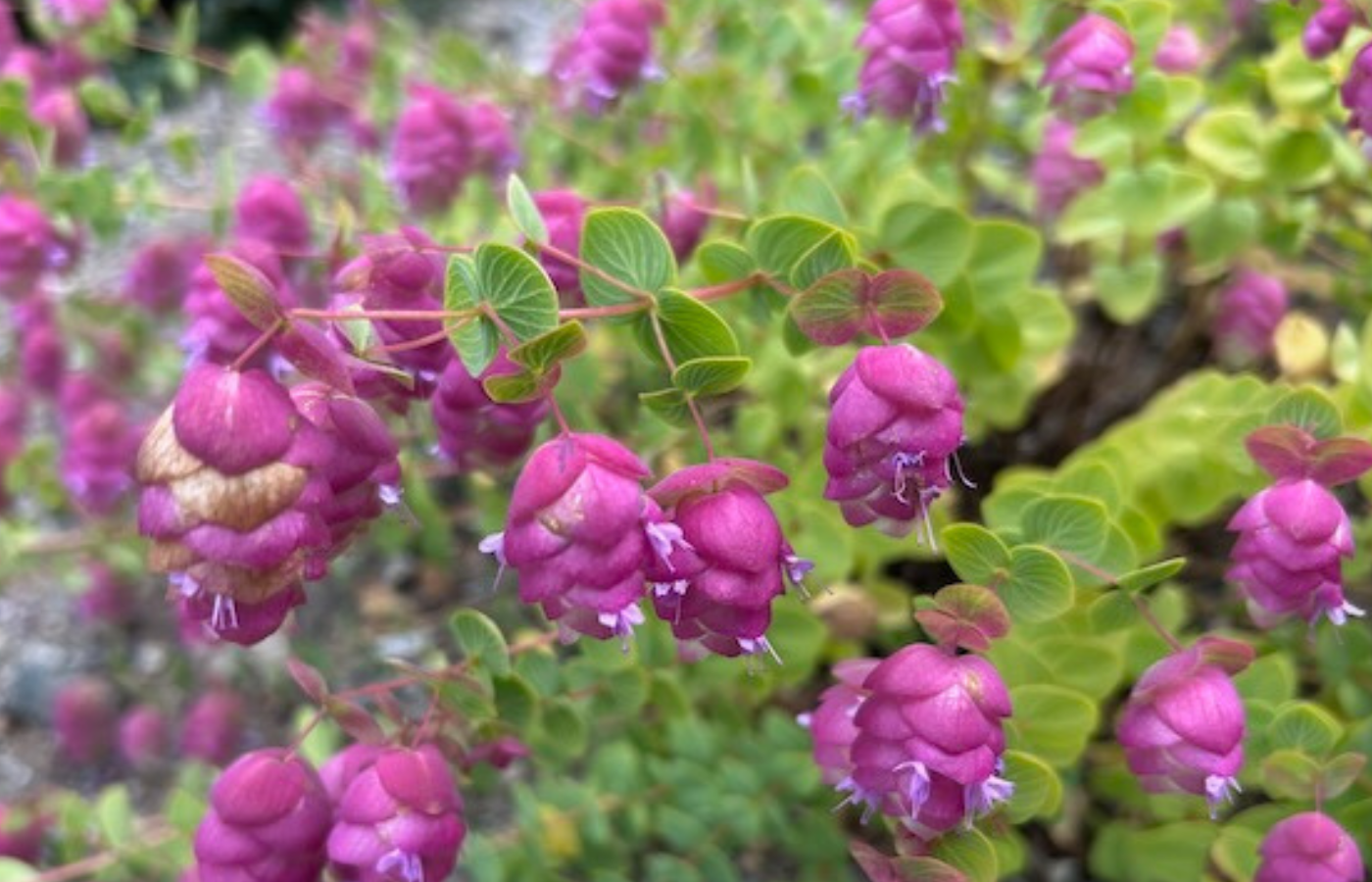

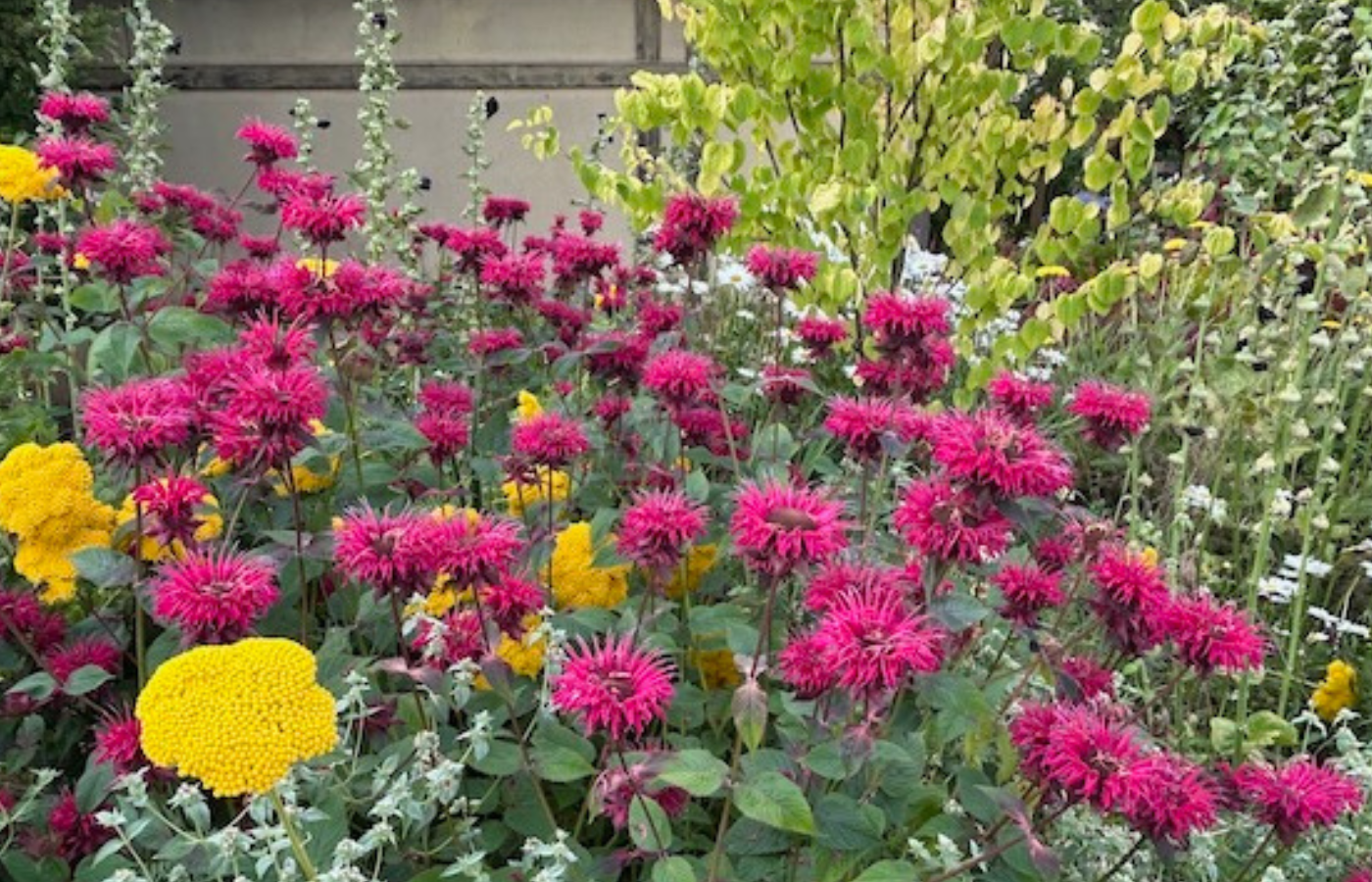




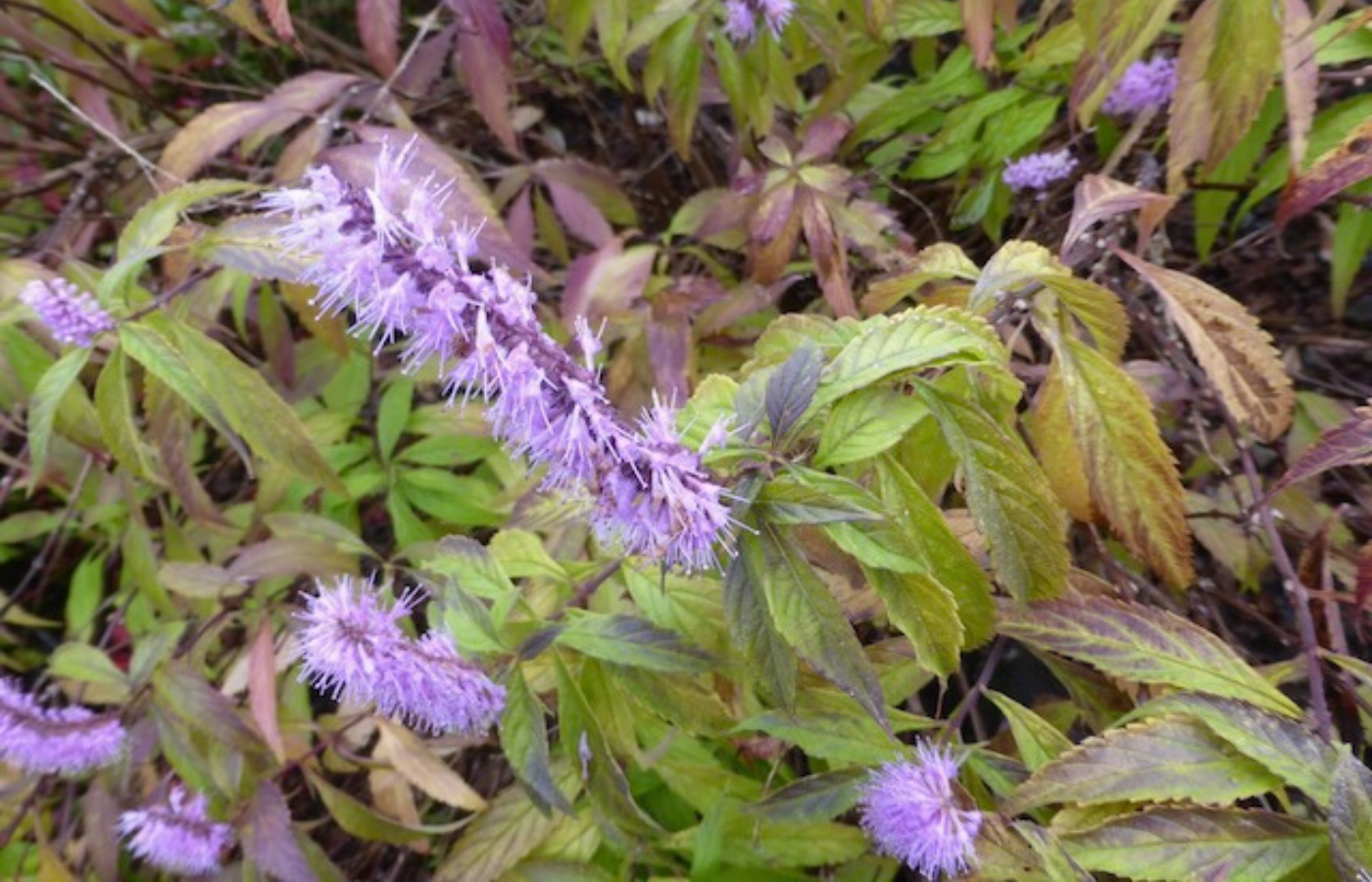
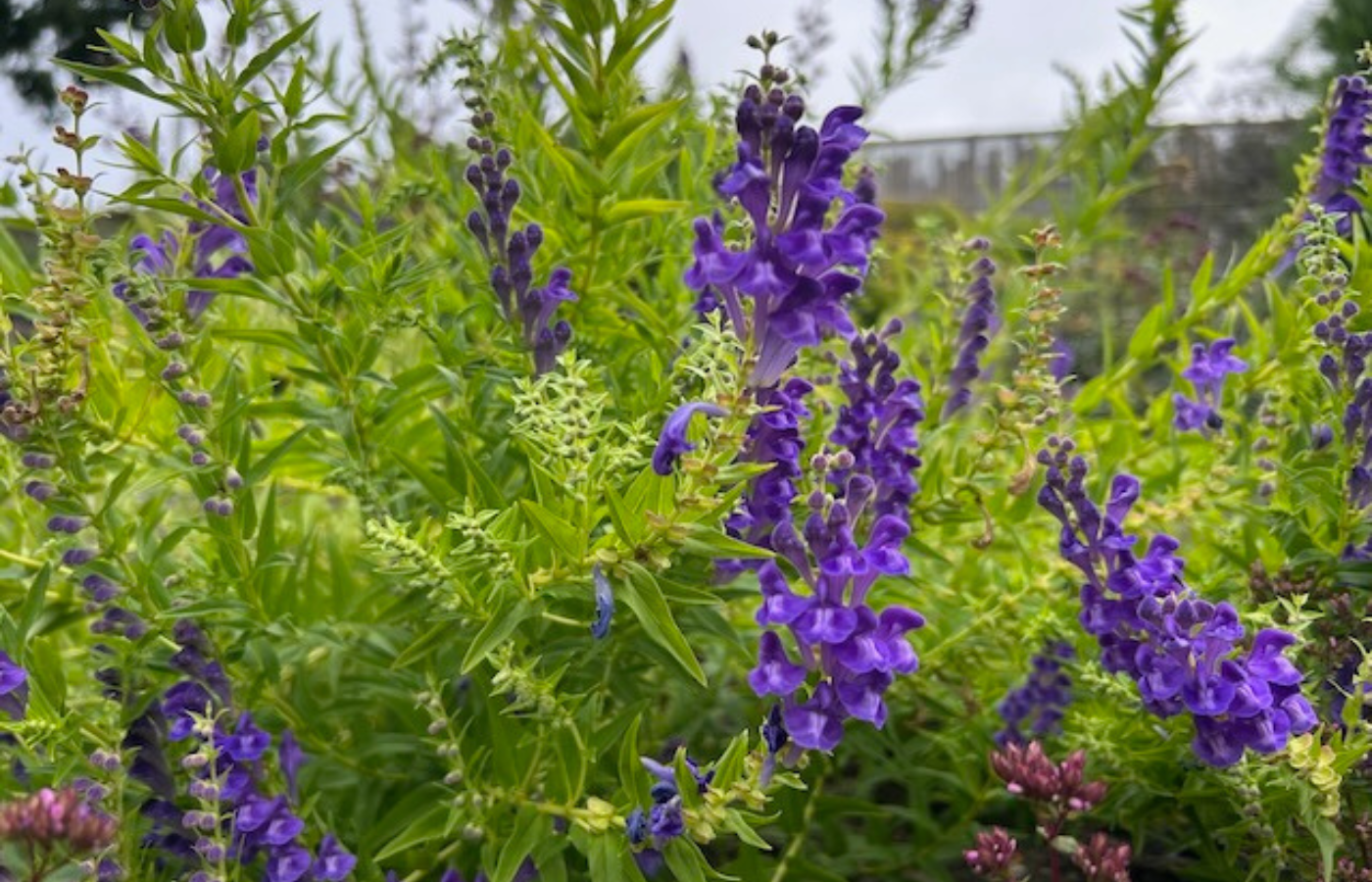
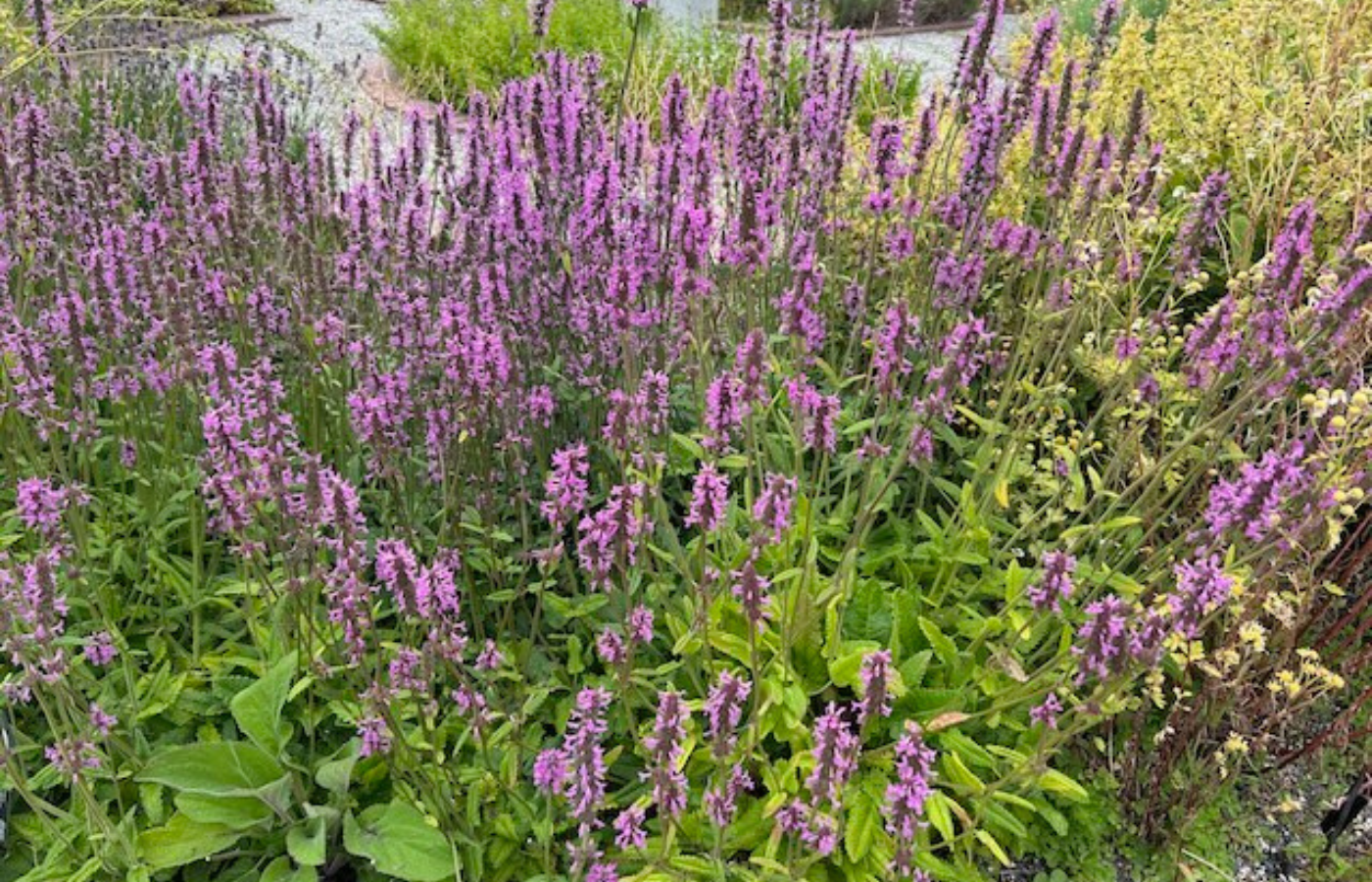
A great article as always, this one is especially useful for the garden guides . A useful addition to our tours.
Thank you
Gudrun